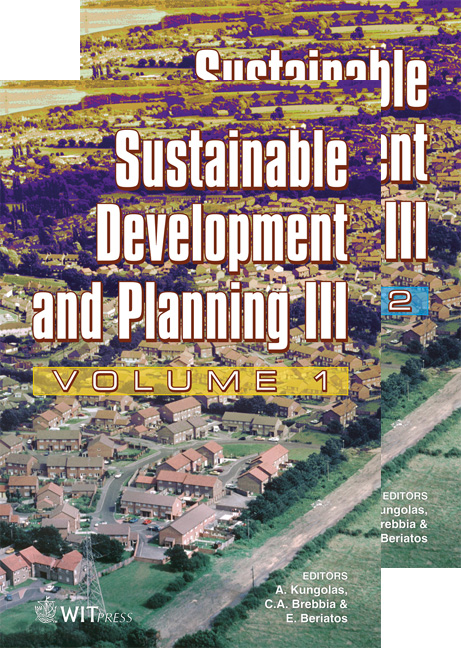Aspects Of Sustainability In New Urban Developments: Case Study Of Santa Barbara, Seville
Price
Free (open access)
Transaction
Volume
102
Pages
10
Published
2007
Size
729 kb
Paper DOI
10.2495/SDP070151
Copyright
WIT Press
Author(s)
M. López de Asiain Alberich, A. Ehrenfried & M. Sierra Hernández
Abstract
The reality of our cities poses new challenges. The proliferation of the sprawling city as a higher standard model is provoking non-sustainable situations in a large number of cities worldwide. The alternative compact city model resulting from the traditional European city provides sustainably advantageous aspects in relation to the spread model, but a specific study is required to determine what aspects of sustainability are applicable to new urban developments in our cities. For this purpose, the case study of the development of Santa Barbara in Seville will be examined, a paradigmatic project for its great size and environmental approach. Covering an overall surface of 3.751.260 m2, 25% of the area remains as green space, with a built surface of 2.246.180 m2, 81% of which is devoted to housing and 19% to business. The topics that have been developed are structured in three large groups: matter, energy and information flows. They have been developed at different scales following a study of accessibility and alternative mobility. The urban space has been shaped according to the interpretation of the green space as a primary consideration, and to the built space as secondary. The project has been developed from the large scale main through routes to small scale pedestrian mobility and access to private and semi-public spaces. Aspects related to energy saving and bioclimatic architecture in buildings have also been developed. The aim of this study is to take a step forward in urban planning, taking us closer and closer towards the paradigm of sustainability and enabling us to adopt it as a new model for society. Keywords: environmental architecture, bioclimatic architecture, environmental urban planning, sustainable urban planning, sustainable city.
Keywords
environmental architecture, bioclimatic architecture, environmental urban planning, sustainable urban planning, sustainable city.





